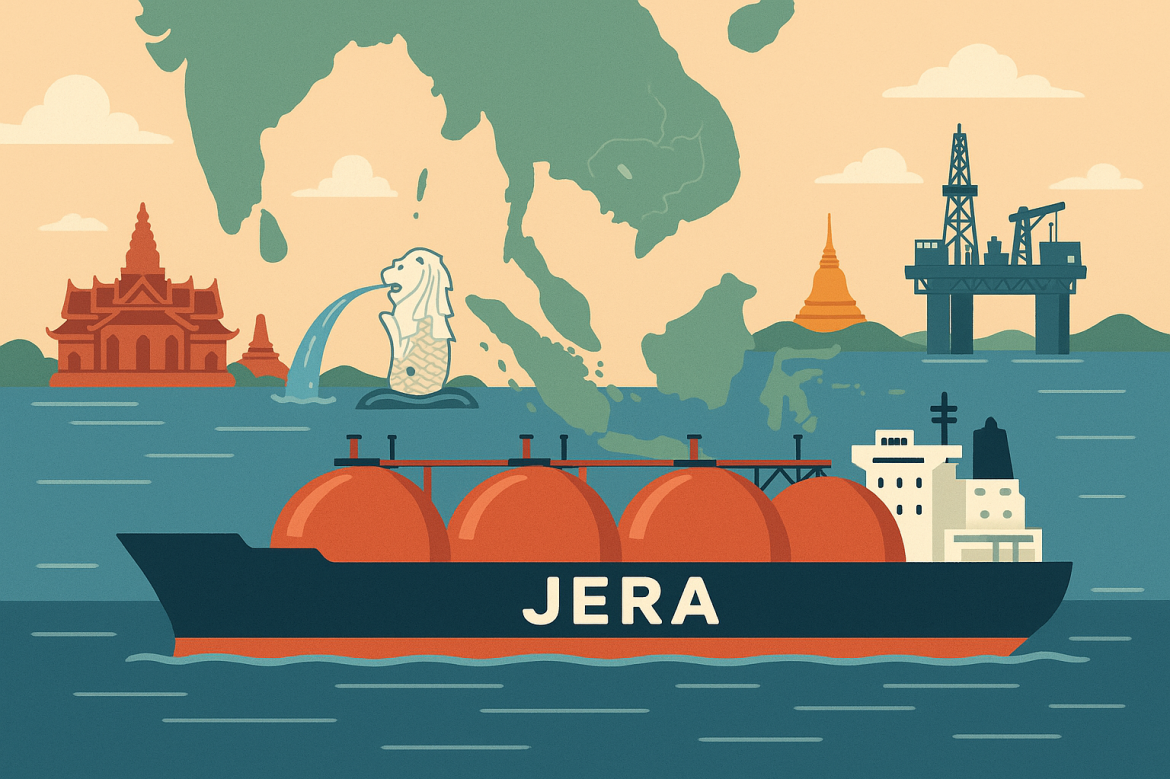
Japan’s top power utility Jera targets Southeast Asia’s growing LNG market
Japan’s largest power generation company, Jera Co., is stepping up its liquefied natural gas (LNG) investments across Southeast Asia as the region’s energy needs surge beyond what renewables can currently supply.
With electricity consumption growing rapidly in emerging economies like Malaysia and Indonesia, Jera aims to position itself as a key player in bridging the energy gap left by slowing domestic gas production.
According to a Bloomberg report, the company’s regional arm, Singapore-based Jera Asia Pte., is scouting new LNG and power projects to help meet mounting demand.
It also plans to recycle capital through selective divestments, redirecting funds to fast-growing markets where energy transitions are underway.
LNG’s expanding role in Southeast Asia’s power mix
Southeast Asia’s appetite for LNG is accelerating faster than expected.
As per Bloomberg, regional LNG demand is set to nearly double by 2030 from 2023 levels, as utilities scramble to ensure supply security while managing renewable intermittency.
This trend is attracting global energy players, with Jera already active in the Philippines, Thailand, and Indonesia.
Malaysia’s state-owned Petroliam Nasional Bhd. (Petronas) projects that the nation could become increasingly reliant on LNG imports within five years.
It is developing a third regasification terminal to meet rising consumption. Meanwhile, Indonesia has asked overseas buyers to accept delivery delays as it diverts more LNG for domestic use to meet its growing electricity needs.
For Jera, this presents an opportunity to expand its portfolio of LNG terminals, power plants, and storage infrastructure.
By integrating gas with renewable energy projects, the company is aiming to strengthen energy reliability in markets undergoing decarbonisation.
Diversifying growth beyond Japan
Jera, already Japan’s top LNG importer, is looking beyond its domestic market as energy demand plateaus at home. The company is eyeing new markets in Asia where gas remains a crucial transition fuel.
Its growing presence in Southeast Asia complements broader expansion efforts across developing regions, where rapid industrialisation and urbanisation are increasing electricity consumption.
Bloomberg states that Izumi Kai, chief executive officer of Jera Asia, said the firm’s strategy includes exploring LNG-to-power projects that combine generation and terminal facilities.
The approach allows greater flexibility and cost efficiency while ensuring steady supply to countries transitioning from coal to gas.
The utility’s latest move includes the opening of a new office in Bangladesh, signalling interest in South Asia’s energy infrastructure growth.
Bangladesh, facing chronic power shortages, is expected to import more LNG as domestic reserves decline. Jera’s entry aligns with its vision to build a diversified energy footprint across Asia’s fastest-growing economies.
Challenges in balancing renewables and gas
While Southeast Asia is pushing ahead with renewable investments, most countries still depend heavily on fossil fuels. Solar and wind energy face integration challenges due to grid limitations and inconsistent generation patterns.
Gas, therefore, continues to play a stabilising role in regional power systems.
Jera executives have emphasised that meeting Southeast Asia’s rising power demand solely with renewables and battery storage is “very difficult,” notes Bloomberg.
Natural gas, particularly LNG, remains essential to maintain reliability while supporting emissions reduction goals.
The company’s long-term view aligns with a broader global energy narrative — that gas will act as a transition fuel until large-scale renewable infrastructure becomes fully viable.
Industry experts expect LNG trading volumes in Southeast Asia to rise sharply as more terminals, pipelines, and storage facilities come online by the end of the decade.
Jera’s early investments could give it a first-mover advantage in capturing new supply contracts and partnerships across the region.
Reinvesting in future growth
As part of its expansion strategy, Jera plans to divest certain mature assets to recycle capital for emerging market projects.
The company’s flexible investment approach reflects a shift in Japan’s energy sector, where firms are increasingly prioritising sustainable yet commercially viable ventures abroad.
By combining LNG infrastructure with clean energy initiatives, Jera aims to balance profitability with its decarbonisation commitments.
Its growing footprint across Southeast Asia and South Asia signals an evolution from a domestic utility into a regional energy powerhouse, positioned at the intersection of energy security and the global transition toward cleaner fuels.
The post Japan’s top power utility Jera targets Southeast Asia’s growing LNG market appeared first on Invezz
